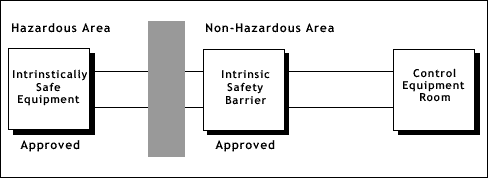What is Intrinsically Safe?
Intrinsically safe is achieved by limiting the amount of power available to the electrical equipment in the hazardous area to a level below that which will ignite the gases.
In order to have a fire or explosion, fuel, oxygen and a source of ignition must be present. An intrinsically safe system assumes the fuel and oxygen is present in the atmosphere, but the system is designed so the electrical energy or thermal energy of a particular instrument loop can never be great enough to cause ignition.
Traditionally, protection from explosion in hazardous environments has been accomplished by either using explosion proof equipment which can contain an explosion inside an enclosure, or pressurization and/or purging which isolates the explosive gas from the electrical equipment.
Intrinsically safe equipment cannot replace these methods in all applications, but where possible can provide significant cost savings in installation and maintenance of the equipment in a Hazardous area. The basic design of an intrinsic safety barrier uses Zener Diodes to limit voltage, resistors to limit current and a fuse.

Most applications require a signal to be sent out of or into the hazardous area. The equipment mounted in the hazardous area must first be approved for use in an intrinsically safe system. The barriers designed to protect the system must be mounted outside of the hazardous area in an area designated as Non-hazardous or Safe in which the hazard is not and will not be present.
APPROVALS
Intrinsic safety equipment must have been tested and approved by an independent agency to assure its safety. The customer should specify the type of approval required for their particular application. The most common Agencies involved are as follows:
COUNTRY AGENCY
USA – FM, UL
Canada – CSA
Great Britain – BASEEFA
France – LCIE
Germany – PTB
Italy – CESI
Belgium – INEX